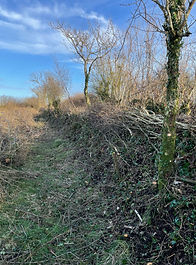top of page










Log piles
A perfect habitat for'bugs', small mammals and amphibians. The damp environment provides small places to shelter in and food sources. Some creatures will take up permanent residence, while many animals are active at night, so need a safe space during the day. Others may use it as a frost-free location to overwinter. As the wood decays, more animals will be able to make their home in it. as well as fungi and mosses.


bottom of page


